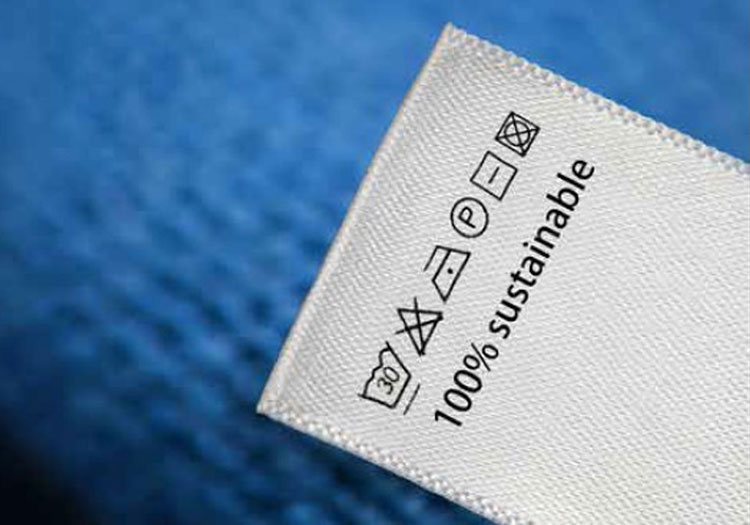
Sustainable fashion is growing rapidly in conjunction with the
design and philosophical movement of being ethical. But what is sustainable
fashion and why should choose it?
What is sustainable fashion?
Sustainable fashion is often characterised as a ‘slow
fashion’ due to the resources and materials it uses. For example, ‘slow
fashion’ is often is made of durable products such as cotton and linen meaning
that the goods are of a higher quality and last longer. Sustainable fashion is
synonymous with this slow fashion.
Fast fashion however, is what sparked the wave of slow
fashion. Fast fashion is often associated with cheap clothing that follows the
trends and often ends in landfill sites when they are thrown out. These
landfill sites stretch miles longs and are polluting the Earth. The UK based
charity WRAP has estimated that £140 million worth of clothing goes into
landfills each year, and a staggering £30 billion worth of unused clothing is
still sitting in our wardrobes nationwide (WRAP, 2018).
Why should you buy sustainable clothing?
Fashion has always been known to be a big polluter of the
environment, in fact it is the second most polluting business after oil.
The industry alone consumes vast amounts of water as seen in
the staggering 2,700 litres of water needed to make one t-shirt. Beyond this,
the fashion industry is said to contribute to around 10% of global greenhouse
gas emissions due to its carbon intensive supply chain and production process. Greenhouse
gases lead to the Earth getting hotter as they get trapped in the atmosphere,
resulting in climate change.
Dominque St. John, fashion PR said: “It is not only important
to care for our environment but also to know where our clothes come from. We
now live in a society where we question how good we feel and more companies
offer transparency. It is also about morality.”
Polyester production accounted for around 40% of total
fashion industry emissions in 2014. All of this again culminates to climate
change which is an issue widely covered in today’s media. If we choose to
change our habits to become more sustainable today, then not only are we
helping the Earth, but we are also futureproofing it for future generations.
Sustainable fashion is not only beneficial to the environment,
but it is also is socially ethical. For workers in the developing world’s
textile industry, sustainable fashion means higher wages as the goods take
longer to make. This a step upwards from ordinary fashion as the goods produced
for stores like Primark are often produced cheaply and in bulk which translates
to lower prices for the consumer but also lower wages for the workers who are
making the goods.
Evelyn Leow founder of Lily and Lord, an ethical and
sustainable children’s wear brand said: “Sustainability usually involves
ethical production meaning higher wages and fairer prices throughout the supply
chain adding to cost.”
Ms Leow added that it had become easier to supply
sustainable clothing as there was more demand.
“These days, one can source sustainable materials more
easily quickly and widely.”
How can you transition into buying sustainable clothing?
First, have a look in your closet and see what you have already
got. The clothes which you don’t want to keep take them to the charity shop if
they are in a suitable condition. The ones which aren’t fit for charity you can
see if they are recyclable.
After you’ve sifted through your existing clothes, you can
either look into sustainable clothes from stores or you can go one step further
and go to a thrift store. Thrift stores are great places to get unique clothing,
but always be picky in them; try on the clothes at the store and try to make an
outfit with the piece and then buy it. It’s easy to overload in thrift stores
because you can get some really funky pieces but it’s harder to create an
outfit with vintages clothes. So be sure to mix and match outfit choice using
your wardrobe at home to see if the clothes are worthwhile in your closet.
If something you have bought, sustainable or not, doesn’t
quite fit right, try not to throw it away. Instead attempt to alter it. This
may seem like a daunting feat, but you can learn things quickly on sites like YouTube
or from your family. It can also become a very rewarding hobby as you get a
finished product that fits, plus it’s a very sustainable and fashionable
method. If you don’t feel like getting the needles and thread out you can ask
someone you know to alter it, you never know who has a sewing machine knocking
around in their house.
Ms St. John recommended some stores which already sell
sustainable clothing. She said: “Stella McCartney is already an excellent
example of sustainable fashion with her eco-friendly fashion line.
“In the world of E-commerce, Rent the Runway offers shoppers
through a subscription service access to an online wardrobe. More services like
these will come up as consumers will take advantage of the benefits of updating
their style quickly without having to throw away their clothes.”
Larger fast fashion companies like H&M, Zara and Nike
are now working towards producing more sustainable clothing. This move will
take a long time to be enforced, but nonetheless it is a step forward to a
brighter and more sustainable future. It also signifies the shifting moral of
High Street stores to provide better quality clothes for the ordinary consumer.
We, as consumers have a conscious decision every time we buy
a piece of clothing to check whether it is sustainable or not. We all need to
take advantage of this choice and choose the option if we can. It will help to
sustain and preserve the earth. The impact of the fashion industry on our Earth
is colossal and something we cannot ignore so please choose sustainable, be
sustainable, live sustainably.
Evelyn Leow: https://twitter.com/lilyandlord
Dominique St. John: https://www.instagram.com/dominiquestjohn/

No comments:
Post a Comment